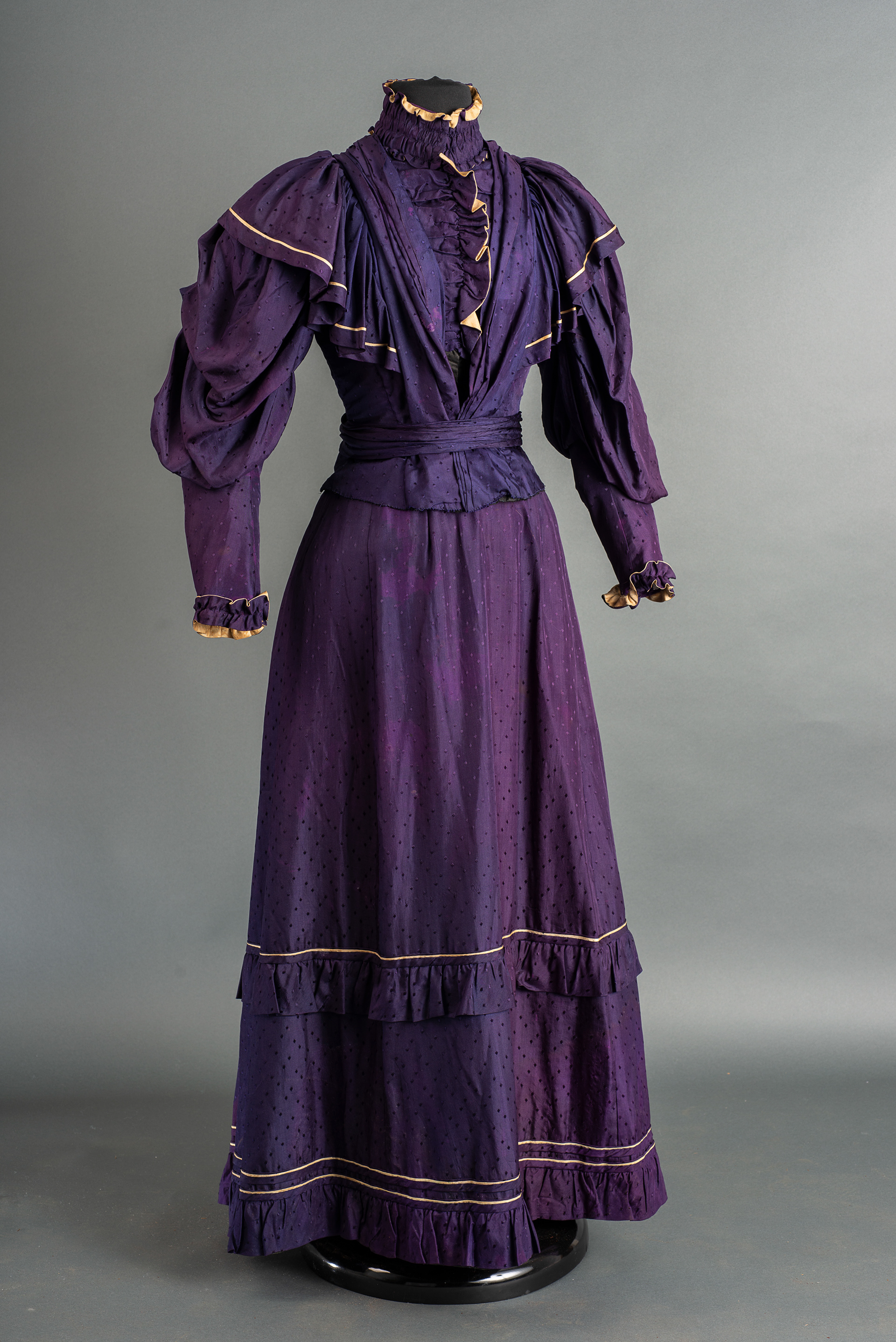The Day Dress
1898-1899
This dress would be worn by a younger woman than the others pictured here. It was worn by Millicent Todd Bingham at the end of the century. This dress has a different style than many of the other dresses on this page since its silhouette is more slim and the skirt has less volume around it, although this dress does have boning around both the front and the back. The sleeves of this dress are the most extravagant part of it. This dress is more playful and lighthearted than many of the other dresses.
The Tea Gown
1885-1899
The Tea Gown was accepted by dress reformers as a more comfortable alternative to the structured dress. The tea gown could be worn without the corset, since it had a close fitting lining inside the dress. This style of dress was inspired by the classic Greek Goddess style, which can be seen in its loose shape. The dress is cut using princess seams and has no defined waistband. This garment can be put on without the assistance of a servant. Originally the tea gown was only acceptable for five o’clock tea or dinner with intimate family members. But as the century turned some women began to wear this dress out in public.
Comparing The Day Dress And The Tea Gown
The tea gown is a dress worn by women trying to start a dress reform, while the purple dress still utilizes aspects like tight fitting arms and boning. While the tea gown is not as loose as it appears because of its tight fitting lining, it is still more comfortable than a heavily boned, tight fitting bodice. Both of these dresses were worn during the same time, but by very different women. Both of these dresses were seen as fashionable, but within different spheres. The purple dress was appropriate for the public while the tea gown would only be worn for intimate gatherings when it first began to be worn.

Day Dress

